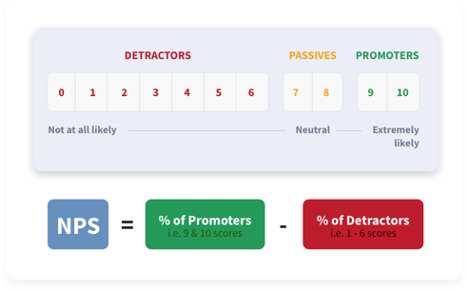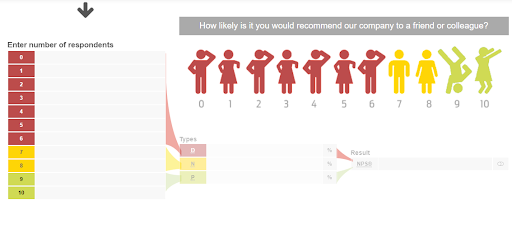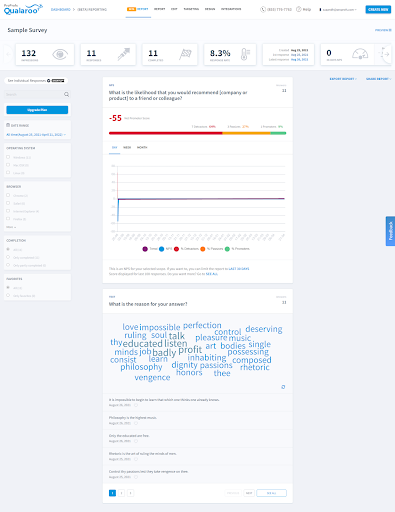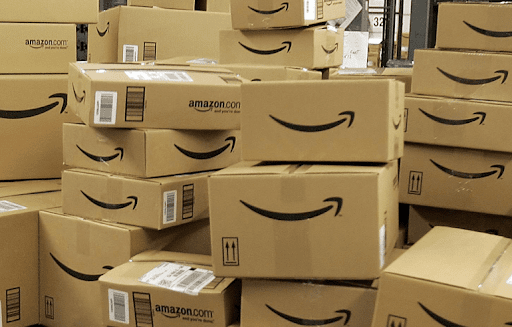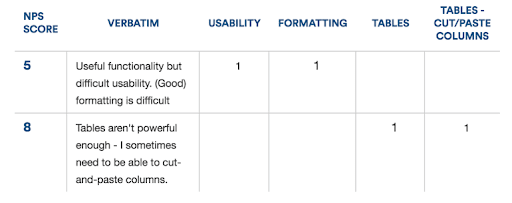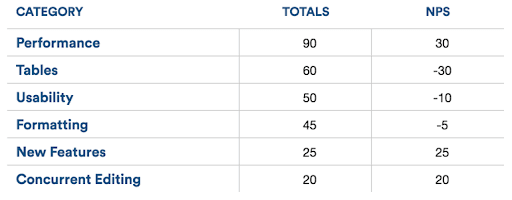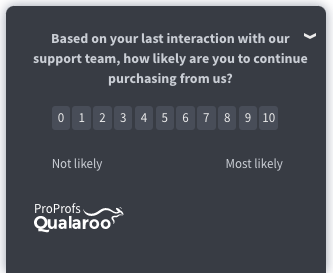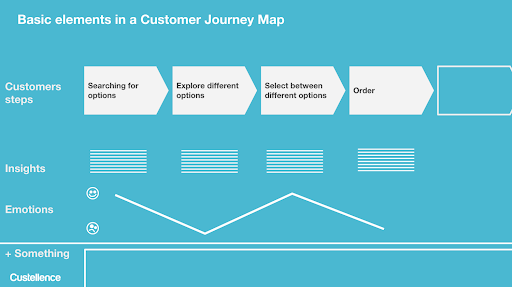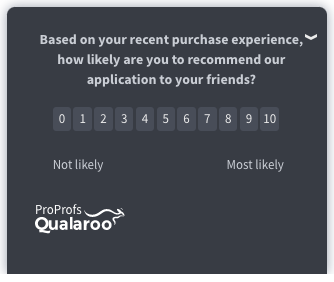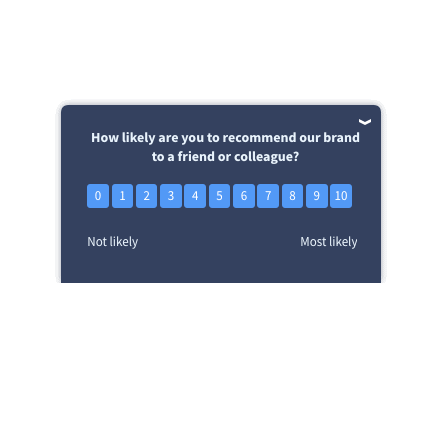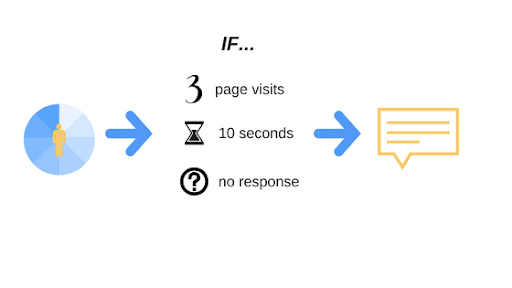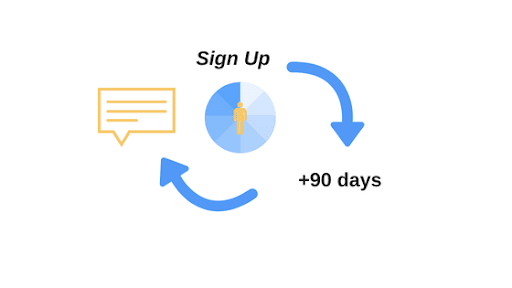In the previous chapter, we dove deep into the process of creating flawless NPS surveys, so now, let's discuss how to calculate NPS, the possible NPS formulas you can implement, and where and how to conduct NPS surveys.
Additionally, since every business has its share of negative reviews and detractors, we'll also touch upon how you can leverage negative feedback to your advantage.
Let's begin.
How to Calculate NPS?
The NPS survey is quite straightforward to serve. The Net Promoter Score definition lays out this question, which you can tweak to best suit your target customer segments.
People who respond with a 9 or 10 are "promoters." People who respond with a 7 or 8 are "passive." People who respond lower than 7 are "detractors." Fret not – they can be helpful!
Watch how to calculate Net Promoter Score easily to improve your CSAT metrics!
Net Promoter Score Example:
Say you got 1000 responses on your NPS survey. Of these, 400 customers gave scores between 0-6, 500 gave 9-10 scores, and the remaining 100 rated between 7-8.
That means you have the following in percentage:
-
400 detractors = 400/1000 x 100 = 40%
-
500 promoters = 500/1000 x 100 = 50%
-
100 passives = 100/1000 x 100 = 10%
So, as per the formula mentioned above,
Since the NPS is positive 10%, you have more promoters than detractors. You'd have a negative net promoter score if the scenario were reversed.
Types of NPS Calculation Formulas
The formula discussed above is helpful when you've already collected responses and segregated them based on score. It's a fairly manual method compared to the Net Promoter Score formulas discussed below.
Google Sheets/Excel NPS Formula
You can use Qualaroo's Google Sheet NPS formula to calculate your score automatically. Simply copy it and get started with calculating your NPS.
Online Calculator
You can leverage many free NPS calculator tools available online to calculate NPS. For example, you can use this website to calculate the Net Promoter Score by adding crucial information as directed.
Survey Software
As mentioned in the previous chapter, many online feedback tools automatically calculate the NPS from the responses collected through the surveys. It lets you see the overall score on the dashboard.
Why Negative Feedback Is the Holy Grail of Your NPS Survey
Net Promoter Score (NPS) is an incredibly versatile customer success metric. People are always finding new ways to get more out of it.
And one incredible way is to use unhappy customers' feedback and act on it. Every time a customer complains is a chance to improve their experience and convince them to stay with you.
In the big picture—beyond just retaining individual customers—negative feedback gives you invaluable insight on how to improve your product and keeps your team hungry for improvement.
Here are the top three reasons that negative feedback is the holy grail of your NPS survey.
1. Nothing Builds Loyalty Like Solving Problems
Image Source
Even though some customers may give you negative feedback, you can still save them from churning.
Such customers can turn into your brand ambassadors if they feel their voice is being heard and pain points are taken care of.
It'll only happen when you don't address their feedback. Going above and beyond to solve their issues flips the script and shows them you are capable and care about their experience.
In addition, it's always a best practice to close the loop on customer feedback.
How to Close the Loop:
Closing the feedback loop is a tried-and-true customer success method that ensures customers get the solution they want when facing their issues. It's pretty straightforward:
-
If someone responds to your survey with a solvable complaint, follow up with them directly.
-
Ask them to expand on the problem, so you understand the higher-level consequences of what's going wrong. You must uncover how this issue prevents customers' success with your product.
-
Then, solve the problem and follow up again to ensure they get their desired result.
2. Negative Feedback Is the Key to Improvement
HotelTonight has been collecting customer feedback to understand the kind of experience it offers.
Their Chief Data and Strategy Officer at HotelTonight, Amanda Richardson, says that the raw negative feedback helps them improve customer experience.
So, the hotel chain turned towards NPS surveys to collect rich feedback and prioritize feature enhancements based on the NPS score of each customer.
When you analyze NPS results, focusing on the negative feedback leads you to a better product. Positive feedback feels great and tells you what parts of your product you can retain as you iterate on it.
But if that's all you have to go on, you'll never know how to take your product to the next level. Negative feedback shows you where your customer experience falls short, which is the first step to fixing it.
How to Prioritize NPS Responses:
It is applicable beyond Domino's. For example, when Atlassian PMs sift through NPS responses to look for ways to improve products, the first thing they do is get rid of any positive comments.
They then use a simple framework to analyze the remaining comments and identify the most important issues to focus on. Here's how to do it.
Start by tagging negative comments by what aspect of the product the customer said was lacking.
Notice how you wouldn't tag the first comment for "functionality" because the customer said it was a strength. In that case, you only tag the categories the customer rated as weaknesses: "usability" and "formatting."
After tagging each comment, the team creates a table showing each area customers cited as a weakness, the total number of customers who complained about it, and the average NPS score of the customers who referenced that area:
Then, you need to prioritize the categories that attract complaints from the highest number of customers and the most unhappy customers based on the NPS score.
In this case, that would be "Tables." 60 customers said the tables were crappy, and those customers' NPS was around -30. That shows the tables are making customers unhappy. Improving them would have the biggest overall impact on their experience.
3. Negative Feedback Keeps You Hungry
Apple's retail employees are known as some of the best customer service folks in the game. One of the ways they stay sharp is by starting each day with NPS feedback from the previous day.
The store manager reads two comments to the team. The first is a glowing endorsement from a promoter, which the manager credits to the team member involved in the transaction.
The second is a negative comment from a detractor. That's where the motivation kicks in. The manager never names the team members involved, leaving the mistake as a failure the entire team needs to overcome in the future.
Apple store employees are used to hearing how great they are. But while it's good to be confident, your team becomes complacent if you only celebrate success.
Building a reverence for negative customer feedback into your culture prevents success from blinding your team and keeps them focused on constantly improving.
Here’s an interesting read: NPS for Product Managers & How to Design a Product NPS Survey
How to Motivate With Negative Customer Feedback
You can also use your NPS responses to motivate your team. Look for ways to highlight negative comments from customers, such as:
-
Emailing a compilation of negative NPS comments to the team at the beginning of each week.
-
Reading customer criticisms at your weekly all-hands.
-
Keeping relevant teams in the loop for negative feedback so they can take instant action. For example, you can use a CRM that integrates with your survey tool to tag departments and team members on each feedback.
These techniques are especially valuable if your company is starting to get traction and grow.
That's when you and your team are most at risk of drinking your own Kool-Aid and feeling you can do no wrong. Highlighting negative feedback keeps the team grounded and focused on getting better.
WHEN and WHERE to Measure NPS?
Like any other customer satisfaction metric, you need to deploy NPS surveys at the right time and place. So, let's discuss each one.
The When
You can deploy NPS surveys at different stages of your customer journey. But remember, this metric is not suitable for prospects.
When you send out NPS surveys also depends on your purpose. There are two types of NPS surveys that determine the perfect time to send them:
Relationship NPS (rNPS) Surveys
These NPS surveys are concerned with the overall customer experience, customer sentiment and relations and not specific interactions. That’s why they are sent out periodically and strategically on a monthly, quarterly, semi-annually, or yearly basis.
These scores can then be used as a benchmark to compare competing brands. Also, relationship NPS scores will only tell you what a customer feels, but it does not focus on the reasons behind those scores.
For instance: Relationship NPS can be used by airline companies every quarter to see how much brand loyalty has changed over time.
One of the relationship NPS question examples would include:
Transactional NPS Surveys
This type of NPS survey focuses on customers' satisfaction at specific touchpoints in the customer journey. It should be used in the after stages of the customer journey, such as the trial phase, post-purchase, onboarding, or while they are using your product/website.
For instance: If a customer talks to a support executive to get assistance, that conversation will be followed by an NPS survey to let the customer rate their level of satisfaction with the call.
When NPS surveys are focused on every interaction or transaction, they give insights that are a lot more actionable and can help drive continuous growth.
Let's say a particular process in an organization is consistently scoring low NPSs; it's best to change those processes for better customer satisfaction.
Transactional NPS surveys are easily the most popular because they give a great level of granularity for actions and insights.
Another one of transactional NPS survey examples would include:
Episodic NPS
Episodic NPS is perfect for measuring customer experience right after the customer's needs have been met. An entire customer journey is involved in the process, and the survey is triggered at the very end.
Source
For instance: Buying a car requires multiple interactions with the concerned brand, and the NPS survey will only be triggered once the customer journey has been completed.
This journey will have multiple touchpoints, including looking for information about cars on the website, browsing cars in the dealership, taking it for a test drive, and making payments.
All of these touchpoints make up a customer episode, which the NPS aims to evaluate.
This is the most mature NPS metric because it focuses on the entire customer journey instead of specific interactions to give you a broader perspective.
You can also add NPS survey follow-up questions and ask users 'why' they gave that specific rating. With an open-ended question like that, you can get a detailed insight into how to improve your customers' experience.
Bonus Read: Follow-Up Survey Email: How to Get More Responses in 2025
A sample NPS question for episodic NPS would be:
The Where
You can deploy NPS surveys on websites, mobile apps, or your software products. You can use advanced targeting to set triggers, and your surveys will pop up on the platform of your choice.
For example, you can set triggers based on URLs (subdomain and whole website), behavior, traffic source, and more.
Check out all of the advanced triggers you can use to deploy your NPS surveys.
Benefits of Running Your Net Promoter Score Program On-Site vs. Email
How you conduct your NPS campaign can impact your response rate and the quality of your responses. Let's explore both email and on-site as avenues to reach your customers for NPS feedback.
Email campaigns have clear strengths, which is why they're widely used today. If you're interested in gathering a Net Promoter Score on-site, it's important to implement a strategy that maintains these benefits. More specifically, here are the ways email campaigns do it right:
-
Removed from any moment of truth or critical action: This enables a holistic and unbiased response.
-
On a set interval: This lowers the chances of users being over-surveyed.
-
Unobtrusive option: This enables the user to provide feedback or decline easily.
Along with these benefits, email campaigns have clear shortcomings that can make getting a response more difficult. Here's where email campaigns fall short:
-
Dependent on the recipient's schedule.
-
While emails can eliminate bias by asking separately from any call-to-action, they run the risk of asking at a time when the user doesn't have the company, features, or offerings on top of their mind.
-
Introducing an opportunity for feedback when so many other calls-to-action (emails) vying for their attention distracts them from the survey.
Here come on-site surveys to the rescue!
Optimizing your feedback campaign is more crucial than ever, with an ever-increasing need for better data from an audience that demands convenience.
We have seen a shift away from email surveys to capturing feedback from the user directly within their experience or application.
Here's why on-site surveys excel:
-
Highly engaging: Response rates don’t depend on the day of the week, rather on the exact time a visitor is engaged on the website. Qualaroo's in-context surveys achieve high response rates in the range of 10-30% due to immediate placement in the user experience.
-
Control of your CTAs: You have full control of any calls-to-action on-site, which lets you eliminate any potential distractions. Every distraction represents a potential barrier to higher-quality data.
-
Hybrid approach: If done correctly, on-site surveys can maintain all the strengths inherent to email campaigns.
Methods to Run NPS On-Site: Benchmark and Lifecycle
There are two different methods for running your NPS survey on-site, the Benchmark Method and Surveying by Lifecycle. Below, we will detail how each is accomplished with their associated strengths and weaknesses.
Benchmark Method Implementation
This method employs a survey being fired every few months on an interval period suitable for your industry. As a best practice, always ask for NPS feedback on the neutral page away from any moment of truth.
To ensure even a new user has time to experience your site, set it to fire after x pages, -1 or -2 from your average pages visited as a best practice (if your average is 2 pages, fire after 2 or more pages have been visited).
In addition, launch the survey after a short on-page time delay, which can also be determined by the average time spent on each page.
Here is an example of the targeting specifications for the Benchmark Method:
On any page before the login wall as long as the below criteria are met:
-
After a visitor has visited 3 pages
-
After a visitor has been viewing the page for 10 seconds
-
As long as a user has not responded to another survey
-
Until a visitor provides a response
One drawback to this method is that you can't ensure you are asking the regular customer and not the first-timers. Another drawback is that there are times when feedback is not gathered, and your users are left unheard.
For these reasons, we propose another, more sophisticated method: Surveying by Lifecycle.
Surveying by Lifecycle
This method leverages user traits to deploy the survey at an opportune moment for each user. This method tracks the user's sign-up date to ask after an interval period specific to that user.
By tracking the user's sign-up date, you can avoid the page delay and ask on the homepage instead.
The homepage represents a neutral area that will help visitors provide an unbiased response, and the lifecycle delay ensures they have had more experience with your site.
This method also establishes a mature NPS, eliminating the possibility of over-surveying. It removes the chance that a new user will be prompted for feedback, along with every other benefit mentioned above.
Because this method lets the survey stay on indefinitely, it provides two main benefits:
Here's an example of the targeting specifications for Surveying by Lifecycle: On the homepage as long as the below criteria are met:
-
When today's date is: user's sign-up date + 90 days
-
After a visitor has been viewing the page for 10 seconds
-
Until a visitor provides a response
